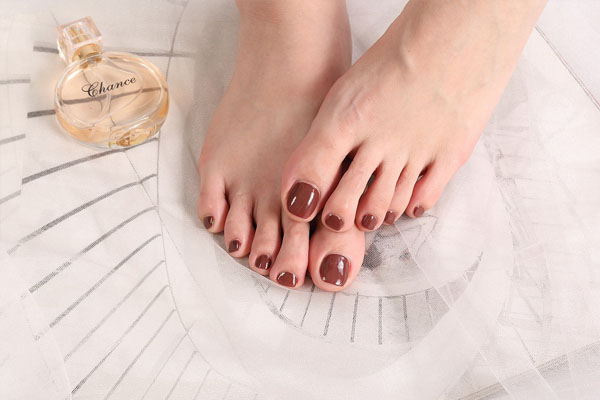Gain a comprehensive understanding of ingrown toenails, including causes, symptoms, and effective prevention tips Explore home remedies, professional treatment options, and frequently asked questions (FAQs) to establish your expertise on ingrown toenail care Prevent discomfort and complications with valuable insights from this authoritative resource
Ingrown toenails can be a painful and bothersome condition that affects many individuals. If left untreated, they can lead to infections and further complications. In this article, we will explore effective solutions and guidance on how to fix an ingrown toenail.
We will begin by understanding what an ingrown toenail is and the common causes and risk factors associated with it. Recognizing the symptoms and signs of an ingrown toenail is essential for early intervention and proper treatment.
Next, we will delve into various home remedies that can help alleviate discomfort and promote healing. These remedies include soaking the affected foot in warm water and Epsom salt, practicing proper nail trimming techniques, and using gentle techniques to lift the ingrown nail.
In cases where home remedies are not sufficient, seeking professional treatment becomes necessary. We will discuss the available options, such as visiting a podiatrist or foot specialist, who can provide expert advice and perform procedures like partial nail avulsion or chemical matrixectomy.
Prevention is also crucial in avoiding future occurrences of ingrown toenails. We will provide practical tips on nail care, choosing appropriate footwear, maintaining foot hygiene, and more.
Throughout the article, we will address frequently asked questions (FAQs) to provide further clarity and address common concerns related to ingrown toenails.
By the end of this article, you will have a comprehensive understanding of how to effectively fix an ingrown toenail, whether through home remedies or professional treatment, and how to prevent future occurrences. Let's dive in!

Understanding Ingrown Toenails
An ingrown toenail occurs when the edge of a toenail grows into the surrounding skin, leading to pain, redness, and swelling. It commonly affects the big toe, but other toes can also be affected.
There are several causes and risk factors that contribute to the development of ingrown toenails. Improper nail trimming, such as cutting nails too short or rounding the edges, can cause the nail to grow into the skin. Wearing tight or ill-fitting shoes that put pressure on the toes can also increase the likelihood of ingrown toenails.
Other factors that may contribute to ingrown toenails include trauma or injury to the toe, genetic predisposition, and certain foot conditions like fungal infections or nail deformities. Additionally, individuals with curved or thick nails are more prone to developing ingrown toenails.
Recognizing the symptoms of an ingrown toenail is crucial for early intervention. Common signs include pain, tenderness, and swelling around the affected area. The skin around the ingrown nail may appear red or inflamed, and in some cases, there may be pus or drainage if an infection is present.
Understanding the causes and symptoms of ingrown toenails is the first step towards effective treatment and prevention. In the following sections, we will explore various methods to fix ingrown toenails, both through home remedies and professional treatment options.
Home Remedies for Ingrown Toenails
While severe or recurring cases of ingrown toenails may require professional intervention, there are several home remedies that can help alleviate discomfort and promote healing:
1. Soak the affected foot: Fill a basin with warm water and add a tablespoon of Epsom salt. Soak your foot for 15-20 minutes, which can help reduce swelling and tenderness.
2. Proper nail trimming techniques: Trim your toenails straight across, avoiding rounded or curved edges. Cutting the nails too short can increase the risk of ingrown toenails.
3. Gentle nail lifting: Gently lift the ingrown edge of the nail using a small piece of dental floss or cotton. This can help relieve pressure and encourage the nail to grow in the correct direction.
4. Over-the-counter antibiotic ointments: Apply an over-the-counter antibiotic ointment to the affected area to prevent infection. Follow the instructions provided on the packaging.
5. Wearing proper footwear: Opt for shoes that provide enough room for your toes to move comfortably. Avoid tight or narrow footwear that squeezes the toes and puts pressure on the nails.
It's important to note that home remedies are generally effective for mild cases of ingrown toenails. If the symptoms persist, worsen, or if you have diabetes or a compromised immune system, it is advisable to seek professional medical advice.
In the next section, we will explore the available professional treatment options for more severe or persistent cases of ingrown toenails.
Professional Treatment Options
If home remedies do not provide sufficient relief or if you have a severe or recurring ingrown toenail, it is recommended to seek professional treatment. A podiatrist or foot specialist can offer expert advice and perform the following procedures:
1. Partial nail avulsion: In this procedure, the podiatrist will numb the toe with a local anesthetic and remove the portion of the nail that is ingrown. This can be done by either trimming the nail or removing a small section of the nail and the underlying tissue.
2. Nail plate avulsion: Similar to partial nail avulsion, this procedure involves the complete removal of the affected nail. This may be necessary for severe cases or if the ingrown toenail is recurrent.
3. Chemical matrixectomy: For chronic or recurrent ingrown toenails, a chemical matrixectomy may be performed. This procedure involves applying a chemical agent to destroy the part of the nail matrix responsible for nail growth, preventing the ingrown portion from regrowing.
4. Antibiotics: In cases where an infection is present or at high risk of developing, the podiatrist may prescribe oral or topical antibiotics to manage and prevent further complications.
It's important to consult a healthcare professional for a proper diagnosis and to determine the most appropriate treatment option for your specific case. They can provide personalized recommendations based on the severity of your ingrown toenail and your overall health.
In the next section, we will discuss prevention tips to help avoid the recurrence of ingrown toenails.
Prevention Tips for Ingrown Toenails
Preventing ingrown toenails is essential to avoid discomfort and potential complications. Consider the following tips to reduce the risk of ingrown toenails:
1. Proper nail trimming techniques: Trim your toenails straight across, avoiding rounded or curved edges. Be careful not to cut them too short, as this can increase the likelihood of ingrown toenails.
2. Choosing appropriate footwear: Opt for shoes that provide enough room for your toes to move comfortably. Avoid tight or narrow footwear that squeezes the toes and puts pressure on the nails.
3. Maintaining good foot hygiene: Keep your feet clean and dry to prevent moisture-related issues. Dry your feet thoroughly after bathing or swimming, paying special attention to the spaces between your toes.
4. Avoiding trauma or injury: Protect your feet from injuries that can lead to ingrown toenails. Take precautions when participating in activities that may cause trauma, such as sports or heavy physical work.
5. Moisturizing your feet: Apply a moisturizer to your feet regularly to prevent dryness and cracking. Moisturized skin is less prone to irritation and can help maintain healthy nail growth.
By incorporating these preventive measures into your daily routine, you can significantly reduce the risk of developing ingrown toenails. However, if you continue to experience recurring or severe cases, it is advisable to consult a healthcare professional for further evaluation and guidance.
In the next section, we will address frequently asked questions (FAQs) related to ingrown toenails to provide additional insights and information.
Frequently Asked Questions (FAQs)
1. What are the common symptoms of an ingrown toenail?
The common symptoms of an ingrown toenail include pain, tenderness, redness, swelling, and in some cases, the presence of pus or drainage.
2. How can I prevent ingrown toenails?
To prevent ingrown toenails, it is important to trim your nails straight across, wear proper-fitting shoes, maintain good foot hygiene, and avoid trauma or injury to the toes.
3. When should I seek professional medical advice for an ingrown toenail?
You should seek professional medical advice if your ingrown toenail is severe, recurrent, accompanied by signs of infection, or if you have diabetes or a compromised immune system.
4. Can I treat an ingrown toenail at home?
Mild cases of ingrown toenails can be treated at home using home remedies such as soaking the foot in warm water with Epsom salt, practicing proper nail trimming techniques, and gently lifting the ingrown nail. However, if the symptoms persist or worsen, it is advisable to seek professional treatment.
5. What are the professional treatment options for ingrown toenails?
Professional treatment options for ingrown toenails include partial nail avulsion, complete nail plate avulsion, chemical matrixectomy, and the use of antibiotics in cases of infection.




